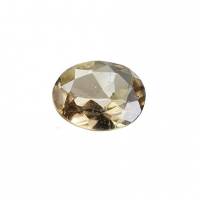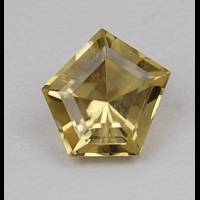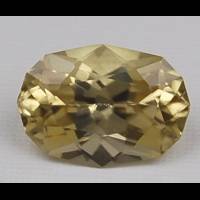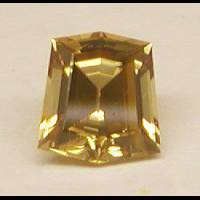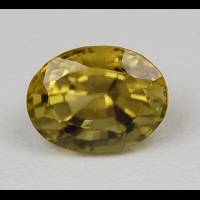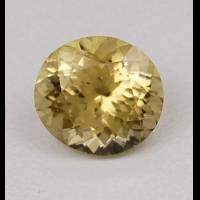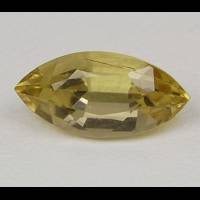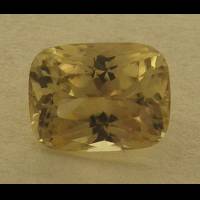Sinhalite
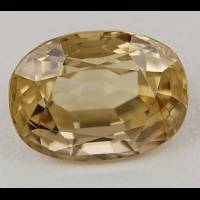
Sri Lanka
10.23 carats
© Rarestone.com
Nowadays Sinhalite is also found in Mogok, Burma and pale-pink to brownish-pink crystals has been reported from Tanzania. Rough, well crystallized sinhalite up to sizes of 20 grams are being found in Madagascar.
Sinhalite Gemstones by Colour
This table shows the variety of hues this gemstone can be found in. Click on a photo for more information.
Sinhalite Gemstones by Size
This table shows distribution of Sinhalite gemstone sizes that are listed on this site. This can give a good indication as to the general availability of this gemstone in different sizes.
Contributed photos
Lightest:0.28 cts
Heaviest:16.39 cts
Average:4.96 cts
Total photos:14
Do you have a larger Sinhalite? Why not upload a photo?
| General Information | ||||||||||||||||||||||
|---|---|---|---|---|---|---|---|---|---|---|---|---|---|---|---|---|---|---|---|---|---|---|
| Chemical Formula |
| |||||||||||||||||||||
| Physical Properties of Sinhalite | ||||||||||||||||||||||
| Mohs Hardness | 6 to 7, Blue Chart Gem Identification (2010) More from other references | |||||||||||||||||||||
| Specific Gravity | 3.46 to 3.50, Blue Chart Gem Identification (2010) More from other references | |||||||||||||||||||||
| Cleavage Quality | None, Gemstones of the world (2001) More from other references | |||||||||||||||||||||
| Fracture | Conchoidal, Gemstones (2009) | |||||||||||||||||||||
| Optical Properties of Sinhalite | ||||||||||||||||||||||
| Refractive Index | 1.665 to 1.712, Blue Chart Gem Identification (2010) More from other references | |||||||||||||||||||||
| Optical Character | Biaxial/-, Blue Chart Gem Identification (2010) More from other references | |||||||||||||||||||||
| Birefringence | 0.036 to 0.042, Blue Chart Gem Identification (2010) DoublingMore from other references | |||||||||||||||||||||
| Pleochroism | Trichroism: green - light brown - dark brown, Blue Chart Gem Identification (2010) More from other references | |||||||||||||||||||||
| Dispersion | 0.018, Gemstones of the world (2001) More from other references | |||||||||||||||||||||
| Colour | ||||||||||||||||||||||
| Colour (General) | Colourless, yellow-brown, green-brown, brown, Gemmological Tables (2004) More from other references | |||||||||||||||||||||
| Causes of Colour | Brown, O2-→Fe3+ charge transfer and Fe2+ in octahedral coordination, Pragmatic Spectroscopy For Gemologists (2011) | |||||||||||||||||||||
| Transparency | Transparent, Gemmological Tables (2004) More from other references | |||||||||||||||||||||
| Lustre | Vitreous, Gemstones (2009) | |||||||||||||||||||||
| Fluorescence & other light emissions | ||||||||||||||||||||||
| Fluorescence (General) | None, Gemstones of the world (2001) | |||||||||||||||||||||
| Crystallography of Sinhalite | ||||||||||||||||||||||
| Crystal System | Orthorhombic, Blue Chart Gem Identification (2010) More from other references | |||||||||||||||||||||
| Habit | Very rare; grains, Gemstones of the world (2001) More from other references | |||||||||||||||||||||
| Geological Environment | ||||||||||||||||||||||
| Where found: | Sinhalite occurs in boron-rich skarns at the contact of limestones with granite or gneiss; most gem sinhalite is found as alluvial pebbles., Gems, Sixth Edition (2006) | |||||||||||||||||||||
| Inclusions in Sinhalite | ||||||||||||||||||||||
| Sillimanite needles - Blue Chart Gem Identification, Herve Nicolas Lazzarelli, 2010, p 4 Needle-like to fibrous crystals - Gemmological Tables, Ulrich Henn and Claudio C. Milisenda, 2004, p 19 | ||||||||||||||||||||||
| Further Information | ||||||||||||||||||||||
| Mineral information: | Sinhalite information at mindat.org | |||||||||||||||||||||
| Significant Gem Localities | ||||||||||||||||||||||
| ||||||||||||||||||||||



